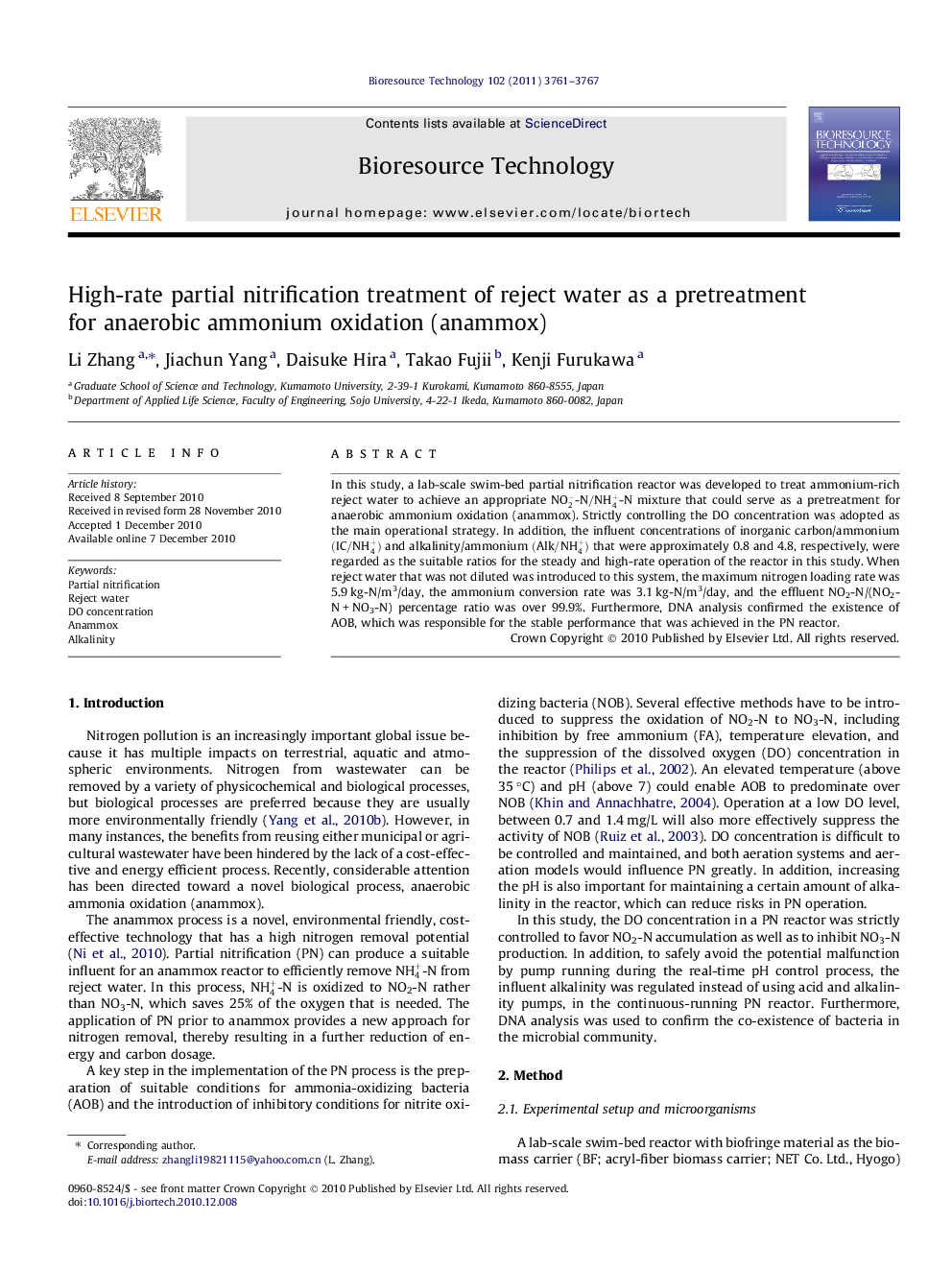| Article ID | Journal | Published Year | Pages | File Type |
|---|---|---|---|---|
| 10395447 | Bioresource Technology | 2011 | 7 Pages |
Abstract
In this study, a lab-scale swim-bed partial nitrification reactor was developed to treat ammonium-rich reject water to achieve an appropriate NO2--N/NH4+-N mixture that could serve as a pretreatment for anaerobic ammonium oxidation (anammox). Strictly controlling the DO concentration was adopted as the main operational strategy. In addition, the influent concentrations of inorganic carbon/ammonium (IC/NH4+) and alkalinity/ammonium (Alk/NH4+) that were approximately 0.8 and 4.8, respectively, were regarded as the suitable ratios for the steady and high-rate operation of the reactor in this study. When reject water that was not diluted was introduced to this system, the maximum nitrogen loading rate was 5.9Â kg-N/m3/day, the ammonium conversion rate was 3.1Â kg-N/m3/day, and the effluent NO2-N/(NO2-NÂ +Â NO3-N) percentage ratio was over 99.9%. Furthermore, DNA analysis confirmed the existence of AOB, which was responsible for the stable performance that was achieved in the PN reactor.
Related Topics
Physical Sciences and Engineering
Chemical Engineering
Process Chemistry and Technology
Authors
Li Zhang, Jiachun Yang, Daisuke Hira, Takao Fujii, Kenji Furukawa,
